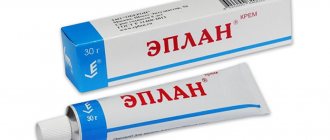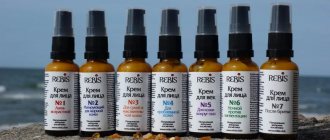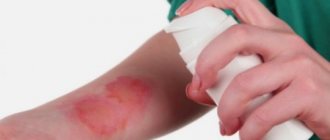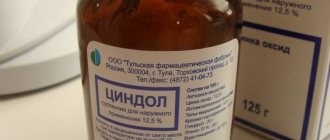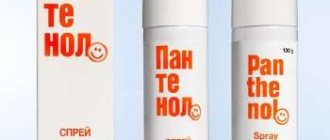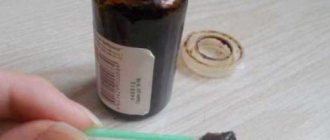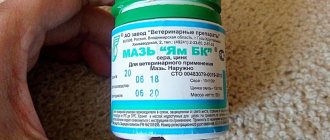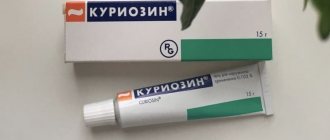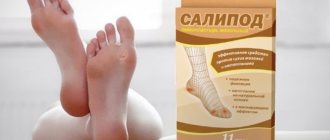Damage to the skin from a chemical substance or as a result of exposure to high temperature is one of the most common injuries in the home. In this case, first aid supplies must be stocked in your home medicine cabinet. Among such drugs, the leader in the modern pharmaceutical market for burns is Dexpanthenol, as well as medications in which it acts as the main substance.
Indications for use
- The drug is most widely used for damage to the integrity of the skin: scratches, abrasions, wounds.
- Dexpanthenol is used for burns from chemical reagents and thermal sources.
- After surgical interventions (postoperative wounds).
- Preparations with the active ingredient dexpanthenol are successfully used for bedsores.
- Inflammatory skin diseases, dermatitis, boils.
- Trophic ulcers of the lower extremities.
- Restoration of tissues after negative environmental influences (water, cold, heat).
- Dexpanthenol ointment for sunburn also shows high effectiveness.
- In pediatrics, this medicine is widespread for the treatment of diaper dermatitis, scratches, and irritation.
- Cracked nipples in nursing mothers.
Features of use for burns
- Injury to the skin under the influence of boiling water is a fairly common phenomenon, especially in domestic conditions. Proper and timely first aid is the key to a quick recovery. When faced with such a problem, first of all, you need to take off your clothes and place the affected area under running cold water. Such actions will reduce the depth of the wound, and, consequently, the severity of the damage. Next, in case of burns with boiling water, it is recommended to treat the affected area of the body with a preparation based on dexpanthenol. It will have an anti-inflammatory, regenerating and softening effect.
- No less common are skin injuries caused by exposure to sunlight. They are usually shallow, but bring some discomfort to the victim. And the first reason for the inconvenience lies in the affected area. After just two hours on the beach, the skin becomes red, sometimes swollen, and general weakness of the body often occurs. First aid medications for sunburn are dexpanthenol-based products. It is recommended to take a cold shower before applying it to the skin. And then use the medication in any form convenient for you. It is absorbed quite quickly and from the first minutes soothes the skin, moisturizes, and relieves inflammation.
- When a chemical burn occurs, first of all, it is necessary to eliminate the provoking factor. To do this, the reagent is neutralized: if it is an alkali, use a light solution of citric or acetic acid, otherwise use soda. An ointment with dexpanthenol for burns is applied to the area cleaned in this way.
These are not all types of skin damage, but only the most common ones. It is important to remember that if you are injured, you must first eliminate the source of impact, and then immediately provide first aid.
What not to do in case of a burn
- When treating a burn with a blister, for example on a finger or hand, it is not advisable to open the blister at home - it is better to see a doctor to make a puncture and remove the membrane. A weeping wound may open under it, into which pathogenic bacteria can easily enter, causing inflammation and other complications.
- Do not touch damaged skin with dirty hands, even if the burn is first degree. Before applying a wound healing agent or when changing a bandage, your hands should be washed and treated with an antiseptic.
- Do not apply ice, cold metal or use ice water to the injury site, so as not to cause additional frostbite to the affected area. Such actions may provide temporary and short-term relief, but then the pain will only intensify. To relieve discomfort, you can wash the burned skin with clean, cool, but not too cold water.
- You cannot provide first aid without taking care of your own safety. This rule is especially important if a person needs help with an electrical or chemical burn.
- Contrary to the widespread “folk” tradition, you should not lubricate the damaged area with oil or fat-containing preparations - they can increase the severity of the damage due to the fact that they create a “film” on the damaged area.
- It is not recommended to use substances containing alcohol for antiseptic treatment - they can cause additional burns, increase pain, dry out already damaged skin, impairing regeneration.
Advantages of the drug
An undoubted positive aspect of using Dexpanthenol for burns is its safety. The product does not have a teratogenic, carcinogenic or toxic effect, which makes it possible to use it by pregnant women, as well as young children. The medicine is successfully used by nursing mothers when cracked nipples occur, without stopping lactation during the treatment period.
Dexpanthenol for burns is well tolerated by elderly patients with various concomitant pathologies. However, extremely rarely, as with any other substance, episodes of allergic reactions are possible. Therefore, it would be a good idea to consult a doctor.
Recommendations for the use of Dexpanthenol for burns
- In case of blisters or pathological changes in the skin, pre-treat the burned area with an antiseptic solution: Chlorhexidine, Furacilin, potassium permanganate (potassium permanganate).
- If you use Dexpanthenol cream for burns, it should be applied in a thin layer, lightly rubbing into the skin. The affected area is treated 1 to 4 times a day. According to the instructions for use, Dexpanthenol spray must first be shaken and only then sprayed onto the affected area. Sometimes it makes sense to first squeeze the drug onto your hand, then spread it over the burned surface.
- If the wound becomes weeping, it is better not to rush with healing medications until it dries. If signs of infection appear: the formation of purulent exudate, increased pain and swelling, significant redness, it is rational to first use the antibacterial agent Theracycline, Levomycetin, Syntomycin, Levomikol ointment.
As you can see, Dexpanthenol for burns is a universal medicine that immediately manifests its effect and ensures a favorable course of the disease and rapid recovery.
Local treatment of burn victims on an outpatient basis
Burns are one of the most common types of injuries. In Russia, more than 400 thousand patients with thermal burns are registered annually. Moreover, only 30% of them require hospitalization; the remaining patients are treated in the clinic. In addition, most patients with the consequences of thermal injury after discharge from the hospital also continue treatment and rehabilitation on an outpatient basis. Therefore, effective treatment of burn victims depends not only on the combustiologist working in the burn center. In many ways, qualified medical care for burns at the outpatient stage determines their further course, the possibility of developing complications and the outcome of the injury.
Local treatment of burns is carried out at all stages of evacuation and treatment of burned victims in accordance with the established volume of medical care for each stage.
First aid to burn victims should be provided immediately, already at the scene of the incident, and begin with stopping the action of the thermal agent and, if possible, removing all materials in contact with the burnt surface (clothing, jewelry, etc.). Further, for local burns up to 10% of the body surface, it is necessary to cool the damaged areas of the skin for at least 15-20 minutes with water or the use of cold objects. Immediate, no later than 30 minutes after injury, cooling the burned surface reduces the time of tissue overheating, preventing the action of the thermal agent on deeper tissues. Cooling reduces swelling and relieves pain, and has a great influence on the further healing of burn wounds, preventing deepening of the damage. The patient should also be given painkillers and antihistamines, in case of extensive burns, warmed up and, if there is no vomiting, given something to drink. During the period of transportation of victims to a medical facility in the presence of limited burns, the primary dressing may be a dry aseptic dressing; for extensive burns, standard contour dressings or sterile sheets are used for these purposes. The primary dressing should not contain fats and oils due to subsequent difficulties in cleaning wounds, as well as dyes, because they can make it difficult to recognize the depth of the lesion.
Ready-made first aid dressings can be used to bandage burnt victims. Among modern first aid dressings and subsequent treatment, especially for patients with limited burns of II-IIIAB degrees, modern wound coverings of the Activtex and APPOLO series, as well as aerosol preparations (Amprovisol, Olazol, Panthenol), can be used.
In clinics and outpatient clinics, medical care can be provided to patients with thermal injuries, including for urgent indications and in order to prepare the victim for transportation to a specialized or surgical hospital. In this case, treatment tactics are determined by the possibility of continuing it on an outpatient basis or the need for hospitalization in a hospital. The criteria for hospitalization of burnt victims are the extent and depth of burns, their localization, the presence of thermal inhalation injury, concomitant injury and concomitant diseases, as well as the age of the victim. It should be noted that during the initial examination it can be difficult to determine the depth of the burns. Most often, the true depth of the burn can only be determined after 5-7 days.
For an outpatient surgeon, it is necessary to have a clear understanding of the indications for hospitalization of burn victims:
Deep burns of IIIB-IV degree. Superficial burns of I-II degree - more than 15% of the body surface. Borderline burns of IIIA degree - more than 5% of the body surface. Burns of special localizations (face, hands, feet or genitals). Thermal inhalation damage. Burn shock .General electrical trauma. Combined or concomitant trauma. Wound infectious complications.
It is known that burn wounds are always infected. The development of inflammation in IIIAB-IV degree burns is a stage of the wound process and is caused not so much by the influence of microflora, which is always present in a burn wound, but by the natural processes of limitation and rejection of dead tissue. Therefore, the often used term “infected burn” is inappropriate. The concept of a wound infectious complication of burns includes conditions when the purulent process spreads beyond the primary lesion, leading to the development of both local (abscess, phlegmon, thrombophlebitis, etc.) and general (pneumonia, sepsis) infectious complications.
Indications for outpatient treatment of burnt patients
Adult patients with superficial I-II degree burns can be treated on an outpatient basis if the affected area does not exceed 10-15% of the body surface, and for borderline IIIA degree burns - 5% of the body surface, outpatient treatment of small-area deep pinpoint burns is also possible, for example from splashing hot oil. For this category of patients, the main thing is local conservative treatment of burn wounds.
Goals of local treatment of burns I-II-IIIA degrees
Local treatment for burns of I-II-IIIA degrees should be aimed at creating the most favorable conditions for their healing in the optimal time and provide protection of the wound from mechanical damage and infection, and, if necessary, effective treatment of wound infection and stimulation of reparative processes.
Primary toilet of a burn wound
Local treatment begins with the primary toilet of the burn wound. After anesthesia, carefully, in a minimally traumatic way, clean the burn surface from contamination, foreign bodies and scraps of epidermis. The wound is treated with antiseptic solutions. Opened bubbles are removed. Large unopened blisters are cut at the base and, without removing the epidermis, the contents are evacuated. Smaller bubbles do not need to be opened. In case of suppuration of the contents of the blisters, the exfoliated epidermis should be removed. It is better not to remove coagulated dry fibrin, since this will injure the underlying tissues; treatment in these cases is carried out under a thin scab. Tetanus prophylaxis is also recommended for all burn victims.
Local treatment of superficial and borderline burns
Treatment of burns of I-II-IIIA degrees can be carried out using both open and closed methods. Moreover, depending on the nature of the created wound environment, these methods are implemented using dry or wet methods. Treatment of burn wounds with the open method is possible on the face, in the genital area and perineum, where bandages make care and physiological functions difficult. In these cases, iodopirone solution, aerosols, and also creams containing silver preparations are used. However, in an outpatient setting, the method of choice is the closed method using various dressings.
For victims with local I-II degree burns, it is possible to use the aerosol drug Acerbin, which has an antiseptic and wound-healing effect. It can already be used when providing first aid. Acerbine, if necessary, is applied several times a day to the wound, which is covered with a sterile bandage soaked in the solution.
After removing the exfoliated epidermis in the absence of signs of infection, it is sufficient to use atraumatic dressings (Parapran, Voskopran, Branolind and others), a single application of which to superficial burn wounds is sufficient for subsequent epithelization under the bandage. You can use other wound dressings (Activtex, Appolo), as well as dressings with antiseptic or antibiotic solutions, water-soluble ointments or creams based on silver sulfadiazine.
For burns of IIIA degree, as well as small deep burns of IIIB degree, treatment can begin with wet-drying dressings with solutions of Iodopirone (Betadine, Povidone-iodine), which promote the formation of a thin scab consisting of necrotic layers of skin and fibrin. The disadvantages of the latter include pain during the first dressings. Under a dry scab, burns can heal without suppuration. In cases where a dry scab cannot be formed, already a week after the injury its suppuration and rejection develop. Treatment should be continued with bandages with water-soluble ointments, and the sloughed scab should be removed during dressings.
At the same time, the use of gauze dressings as a carrier for drugs has a number of disadvantages. Removing dried gauze dressings on dressings, even despite soaking, leads to traumatization of the young epithelium and disruption of spontaneous epithelization of the wound, and the dressings themselves are painful. That's why
The use of atraumatic “mesh” coverings in outpatient settings helps solve the problem of epithelial trauma, reduces the pain of dressings and has a beneficial effect on the course of the wound process.
One of the types of modern dressings is Activtex wound coverings, which are a textile base impregnated with a gel-forming polymer and containing various medicinal substances in the form of a depot system. Depending on the drugs included in the composition, various types of coatings with antibacterial, analgesic and hemostatic effects can be used. The therapeutic effect of the components that make up the Activetex coatings manifests itself only in a wet state, and therefore it is necessary to moisten the dressing before use and then periodically 1-2 times a day. The advantages of Activtex anti-burn dressings are the absence of the need for their preliminary (immediately before use) preparation and prolonged healing properties.
Dressings should be performed at least 2 times a week. If the patient's temperature rises, pain and swelling in the wound area intensify, the bandage becomes wet with pus, it should be replaced more often. Dressings should be performed sparingly, without injuring the thin layer of growing epithelium, especially in the treatment of IIIA degree burns, when epithelization occurs from preserved skin derivatives.
A modern alternative to the dry method of local treatment, when epithelization of superficial burns occurs under the scab, is to create a moist environment on the wound. A humid environment has a beneficial effect on regeneration processes, while the dressings themselves are atraumatic.
A wet dressing method for local treatment of burns is implemented using various film, hydrogel, hydrocolloid and sponge dressings, as well as creams based on silver sulfadiazine.
In the treatment of superficial and borderline burns, various film dressings are highly effective. At the same time, the lack of drainage properties of film dressings requires more frequent (daily) dressings, especially with heavy wound discharge. Therefore, the use of occlusive dressings is contraindicated in the treatment of purulent-necrotic and infected burn wounds with microbial contamination of more than 104 microbial bodies/cm2.
In the treatment of limited superficial and borderline burns, dressings containing hydrogels are widely used. Form-stable hydrogel coatings (Gelepran, Hydrosorb) show good effectiveness in the treatment of burn wounds of II-IIIAB degrees, as well as long-term wounds. Apollo's mesh-based dressing with an amorphous hydrogel differs favorably from its Western counterparts by the presence of anilocaine as an anesthetic and iodovidone as an antiseptic. Hydrocolloid dressings (Hydrocoll) can also be used effectively.
The use of biological materials in the treatment of superficial burns of the first and second degrees is inappropriate. When treating borderline IIIA degree burns in a clinic, various sponge coatings (Algimaf, Algikol, Syuspur-derm, etc.) can be used. They do not require frequent dressings, absorb wound detritus and promote regeneration.
The use of hydrogel, hydrocolloid and sponge dressings due to the active sorption of discharge allows dressings to be performed after 2-3 days, and in the absence of discharge and the dressings are tightly fixed to the wound, they can be left until complete epithelialization and independent separation from the healed surface.
Creams with silver, produced under various names (Argosulfan, Dermazin, Ebermin), which maintain a moist wound environment, create favorable conditions for epithelization and are effective means for local treatment of superficial and border burn wounds, especially in combination with film coatings.
The use of these drugs is advisable for clinical signs of infection and severe suppuration of burn wounds. In addition to them, it is possible to use a solution of Iodopirone (Betadine) and Lavasept. In the treatment of infected burn wounds, gauze dressings with multicomponent ointments on a water-soluble (polyethylene glycol) basis (Levomikol, Levosin, Dioxidin, Iodopyron, Betadine), which can be used in phases I and II of the wound process, have proven themselves well.
With an uncomplicated course of the wound process, the correct choice of methods and means of local treatment, II degree burns heal 1-2 weeks after injury, IIIA degree burns - by 18-21 days. Long-term conservative treatment of non-healing burn wounds in a clinic is a mistake. All burn wounds that have not healed within 3-4 weeks, especially those occupying an area of more than 0.5% of the body area, are deep and most likely require autodermoplasty.
Treatment of burnt patients discharged from the hospital with small residual wounds remaining after superficial burns and in areas of surviving grafts in those operated on for deep burns is carried out according to the general principles of local treatment indicated above.
The criteria for successful treatment of burnt patients is not only wound healing, but also good functional and cosmetic results. According to various studies, in 10% of cases after II degree burns, in 55-62% after IIIA degree burns and in 30-40% of cases after autodermoplasty for deep IIIB-IV degree burns, hypertrophic and keloid scars develop.
It should be noted that the main task in the fight against pathological scars is not so much their treatment as the prevention of scar formation. Carrying out anti-scar measures is most effective for “fresh” scars during the period of their formation. Most conservative treatment of burn scars occurs on an outpatient basis. Typically, a comprehensive course of treatment is carried out over 6-12 months, combining various methods: general and local drug treatment, wearing compression clothing, physiotherapy, massage, physical therapy, balneological treatment, etc.
When carrying out rehabilitation of burn survivors, it is important to take into account that many patients have mental disorders associated with the consciousness of their inferiority. This circumstance requires a special approach and often the need for drug correction. In addition to the development of scars and deformities, patients who have suffered a severe burn disease may have various dysfunctions of internal organs, requiring the involvement of appropriate specialists in the examination and treatment of such victims. Our country does not yet have a unified system for the rehabilitation of burn victims. Training clinic surgeons in the specifics of treatment and rehabilitation of burn victims with the involvement of specialists from burn departments may be one of the ways to solve this problem. More attention should also be paid to improving the system of medical and labor examination of burn survivors and their employment.
After 6-12 months of outpatient conservative treatment after the scars have “matured,” the patient, if necessary, undergoes reconstructive surgery. In cases of rapid progression of microstomia and eyelid eversion, the patient is advised to undergo reconstructive surgery urgently.
The emergence and introduction into clinical practice of new drugs and wound dressings makes it possible to improve the quality of medical care for patients with thermal injuries, including in a clinic, subject to compliance with the appropriate protocols and standards of treatment.
